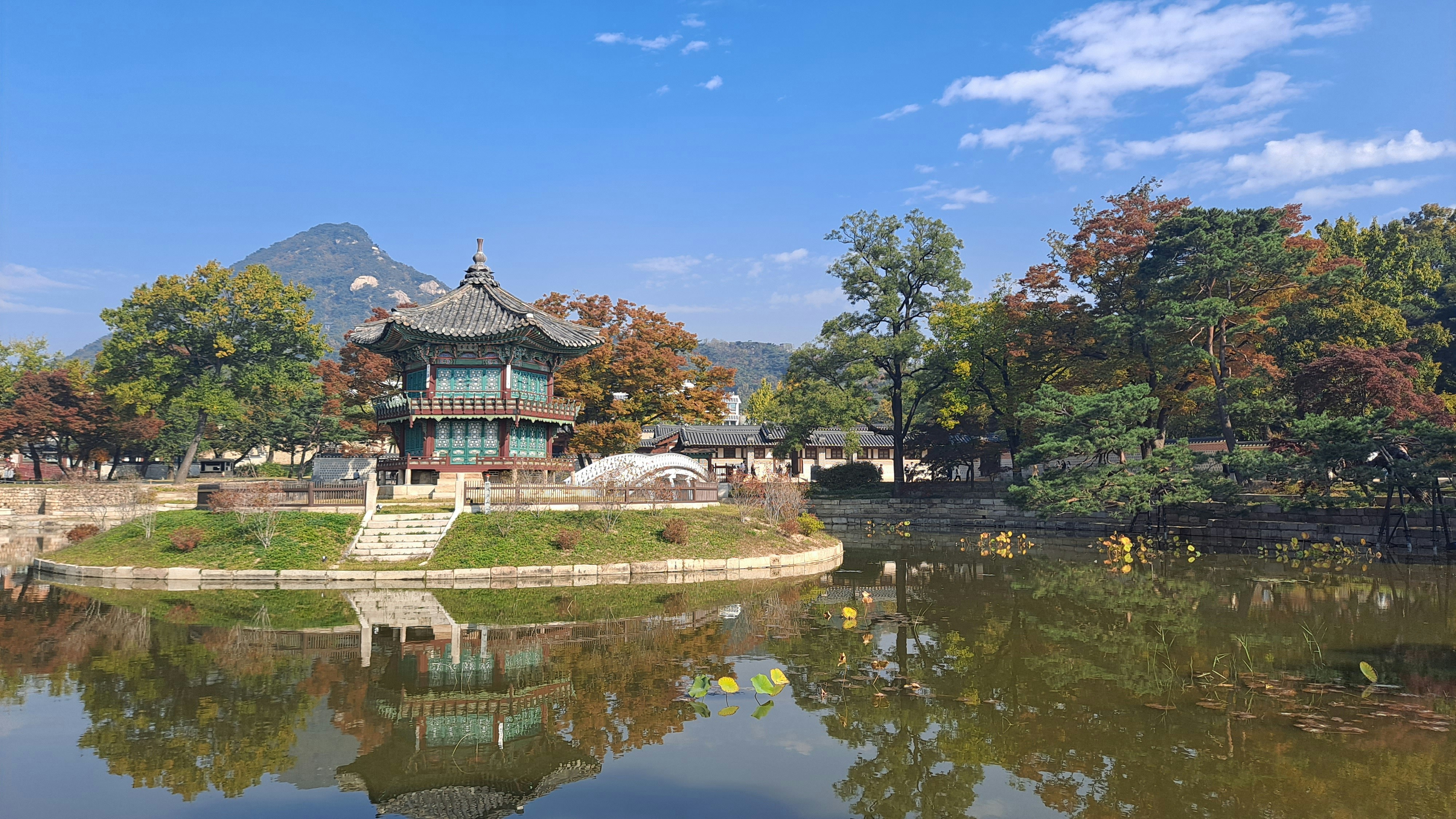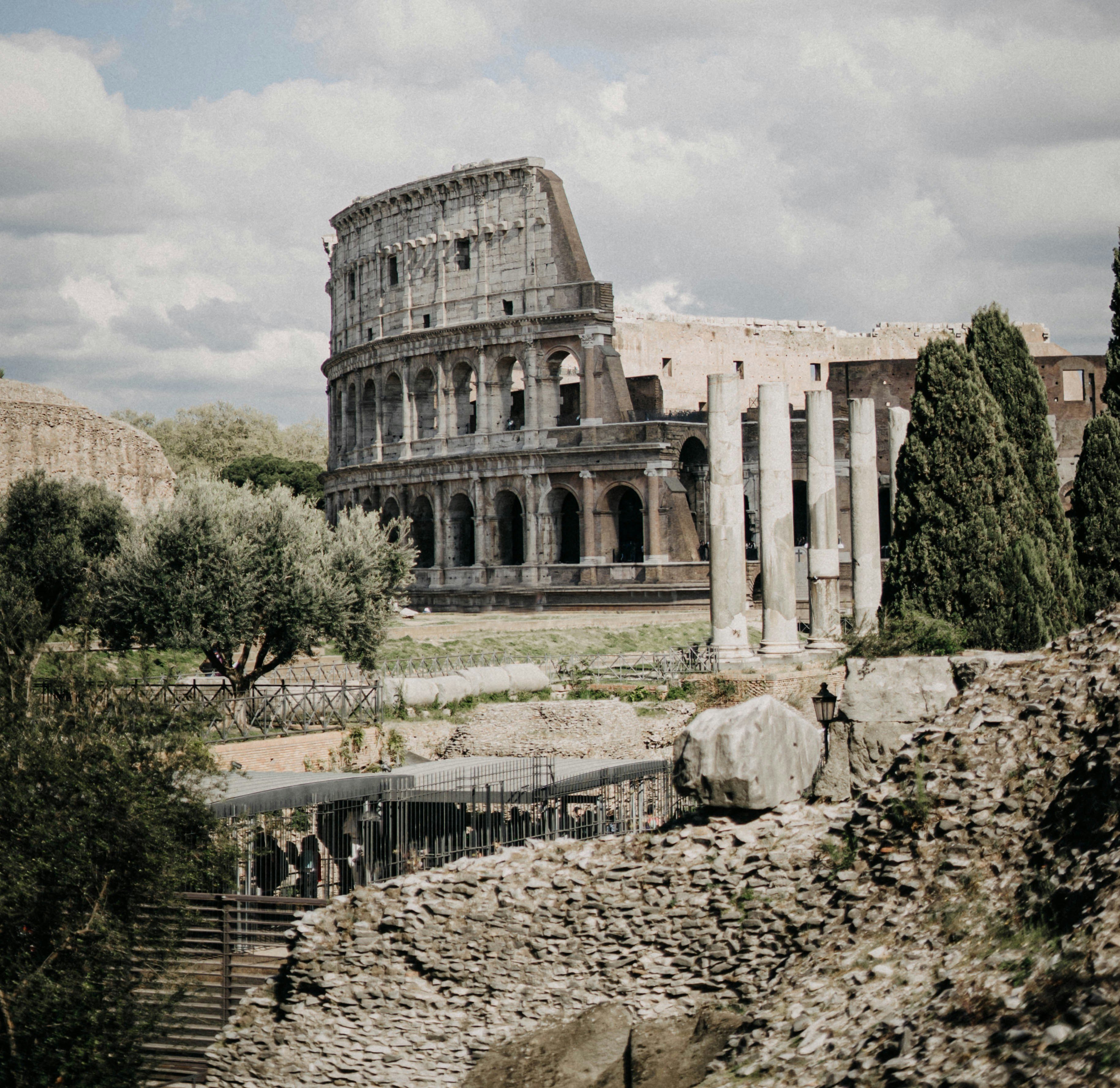Mongolia, Turkey, South Korea, Portugal, Italy, Spain, and Malaysia
We've come a long way, baby! It was just four years ago that the travel world was shut down. Airports were ghostly quiet, tourists had all but disappeared, and popular tourist destinations that relied on travelers’ dollars to stay alive were locked down. There were dire predictions about how long the pandemic would last.
The only thing that was traveling then, it seemed, was the COVID-19 virus. The International Air Transport Association (IATA) later reported that the number of air passengers dropped by 66% in 2020 compared to the previous year.
By late 2021, the vaccine that had been developed with lightning speed was rolling out and there was light at the end of the tunnel. There was also a significant pent-up demand for travel, with people eager to resume exploring after months of restrictions. However, the recovery was uneven, with some regions and sectors bouncing back faster than others.
By 2023 the travel industry had almost completely recovered from the COVID-19 pandemic, with international tourist arrivals and tourism receipts nearing or exceeding pre-pandemic levels. International tourism is on track to recover almost 90% of pre-pandemic levels by the end of 2024. According to the latest data from the UN World Tourism Organization (UNWTO), an estimated 975 million tourists traveled internationally between January and September 2023, an increase of 38% over the same months of 2022.
We are delighted that travel is booming and our clients want to do more of it. So we want to celebrate this return to normalcy by highlighting these seven magnificent destinations for you to enjoy in 2024, for no particular reason except that we think they offer the traveler seeking authenticity amazing experiences spanning culture, outdoors, cuisines, and more. There are links to sample itineraries but remember they are just suggestions. Any of these trips can be customized to your specifications. As always, contact us to get started or for more information at travel@globalbasecamps.com.
Mongolia–Untouched Landscapes and a Unique Way of Life

A Mongolian eagle hunter in traditional dress with his animal. Photo by Lightscape on Unsplash.
A land of expansive, untouched landscapes with a rich nomadic tradition, Mongolia offers a rare opportunity to connect with a lifestyle deeply in harmony with nature. Its sprawling steppes, towering mountains, and pristine lakes provide a backdrop for extraordinary outdoor adventures for intrepid travelers. Trek on horseback across the vast Gobi Desert (see the opening photo), explore the stunning beauty of Khuvsgul Lake, or marvel at the rugged terrain of the Altai Mountains.
Mongolia's nomadic heritage is a living testament to a way of life that has endured for centuries. Travelers can immerse themselves in the nomadic culture by staying in traditional gers, experiencing the hospitality of local herders, and witnessing age-old traditions such as eagle hunting and the Naadam festival.
Mongolia is more than a destination; it's an invitation to step off the beaten path and experience an extraordinary way of life that may soon disappear. Take up that offer while you can.
South Korea–The Future and the Past, Together

Gyeongbokgung Palace, Seoul. Photo by Luminous 37 on Unsplash.
South Korea should be on your travel radar. The rest of the world has finally recognized this captivating East Asian nation as the cultural powerhouse it is and has recently made it a sought-after destination for travelers seeking authentic adventure and a vibrant traditional culture. For the insatiable travelers among us, it’s definitely the place to go.
From the serene Buddhist temples that dot the countryside to the bustling streets of Seoul, you'll be immersed in a world of ancient traditions side by side with modern innovation. Seoul, founded by the Korean Kingdom of Baekje in 18 BC, has been at the heart of the peninsula’s culture and politics since the 11th century. There you can see exquisite examples of traditional Korean architecture at Gyeongbokgung Palace, the main royal palace of the Joseon dynasty, built in 1395, and at the UNESCO-listed 15th-century Changdeokgung Palace. (For those who can’t get enough of royal Korean architecture, there are five royal palaces in Seoul.) Meanwhile, modern culture races along at breakneck speed. Wander the busy streets of the Gangnam neighborhood, where you will see the “New Seoul” and mingle with the young generation of South Koreans who are there to shop, eat, or just hang out and party the night away to a K-Pop beat.
Busan, a large port city, is known for its beaches, mountains, and temples. Gyeongju, a city on South Korea's southeast coast, was the capital of the 1,000-year-long Silla dynasty and is known for its extensive historical remains. For those who want a taste of living history, visit the Demilitarized Zone, the border between South Korea and North Korea that cuts the Korean peninsula roughly in half. It’s an eerie reminder of the schism that still exists between these two nations that were once one.
Before leaving the country, make sure to fully indulge in the bold flavors of Korean cuisine, from the iconic bulgogi and kimchi to the delicate bibimbap and the warming, hearty stews. You’ll be very glad you did.
Malaysia–A True Melting Pot
.jpg?width=1920&height=1280&name=darya-jum-I999fouTx0Q-unsplash%20(2).jpg)
Temple, Kuala Lumpur. Photo by Darya Jum on Unsplash.
For the seasoned traveler who craves authentic encounters and values cultural diversity and immersive outdoor adventures, Malaysia stands out as a must-visit destination.
Malaysia is a hidden gem, a melting pot of Malay, Chinese, Indian, and indigenous influences, with an array of vibrant traditions, languages, and customs waiting to be explored. From the thronging streets of Kuala Lumpur to the historic charms of Penang and the tranquil villages of Sarawak, every corner of Malaysia tells a story of its diverse heritage. Malaysian cuisine, a reflection of its cultural diversity, is not just a feast for the taste buds but a narrative of the nation's history and geography, with flavors that tell stories of trade, migration, and innovation.
Malaysia's natural landscapes range from lush rainforests to pristine beaches and towering mountains. The 130-million-year-old virgin rainforest of Taman Negara–the oldest rainforest in the world– is the jewel in Malaysia’s crown, home to a wide range of flora and fauna, including tigers, elephants, rhinos, and many other rare and endangered species.
In Malaysia, you'll find a country eager to share its heart, inviting you to embrace its culture, celebrate its natural wonders, and become part of a journey that transcends the ordinary.
Turkey–Remnants of Past Empires

Panorama of Istanbul. Photo by Anna Berdnik on Unsplash.
Turkey, where East meets West, is a traveler's dream. Here ancient history coexists with vibrant modern life, and landscapes range from sun-kissed beaches to rugged mountains.
The country’s rich and many-layered history is visible in its architecture, ruins, and cities. From the bustling bazaars of Istanbul to the ancient ruins of Ephesus, every corner of Turkey tells a fascinating story of its history. Experience the vibrant culture of Istanbul, where magnificent ancient mosques stand alongside contemporary art galleries. Or engage with local traditions, witness the mesmerizing dance of the Whirling Dervishes, and explore the remnants of empires that have shaped the world.
Turkey offers unique outdoor adventures in abundance. Trek through the otherworldly lunar landscapes of Cappadocia where underground cities–some as deep as eight stories–of 20,000 lived and worked. Hike the historic Lycian Way, with breathtaking views of the Mediterranean, or explore the unique travertine terraces of Pamukkale. Whether you're a hiker, a history buff, or a beach lover, Turkey's natural beauty provides the perfect backdrop for your adventure.
Turkish cuisine is as diverse as its landscape, offering a feast not just for your tastebuds but for all your senses. Succulent kebabs, fresh mezes, and sweet baklava are just the start. Experience the hospitality of a Turkish tea garden or the teeming energy of a street food market. Each meal is an opportunity to connect with Turkey's culinary heritage and the warmth of its people.
Join us on this journey to Turkey and experience a land of contrasts, where every outdoor adventure is infused with history, culture, and cuisine. Your Turkish adventure awaits and we are dying to take you there.
Italy–History, Art, and Food, Lots of Food

The Colosseum, Rome. Photo by Zach Dyson on Unsplash.
It’s hard to know where to begin when talking about the richness of Italian history and culture. We could begin at the beginning, which for our purposes is the Etruscan civilization, which thrived in central Italy from around the eighth until the third century B.C. Much of Etruscan civilization was either obliterated or assimilated into that of its conqueror, Rome. Although there are still remnants of Etruscan history and culture in Italian life today, for many the civilization lives on only in the name of the area that was its home, Tuscany, or Toscana in Italian, which evolved from its earlier name of Etruria. And for leaving us Tuscany, with its timeless landscape of rolling hills and cypress trees, we can be eternally grateful to the Etruscans. Who could ask for more than Florence, Siena? But they left more, much more. We wish we had space to discuss it all of it but we don't. But suffice it to say less well-known Tuscan cities like Lucca and Pisa or non-Tuscan Etruscan sites like Orvieto, Volterra, and Viterbo are worth your while and will provide haunting and profound experiences to take home with you.
Moving on from the Etruscans to those upstart Romans we encounter more and much better preserved ruins of their civilization. Step into ancient Roman history at the Colosseum, built in approximately 80 A.D., the site of gladiator battles, hunts, mythological dramas, and other entertainments. Or walk through the ruins of the ancient Forum and see the remnants of Roman government buildings, temples, and columns, all of which tell the story of Rome’s influence on the world. Or gaze at the magnificent second-century ruins of Hadrian’s Villa, built as a retreat from the bustle of Rome for the Emperor Hadrian and designed as an ideal city incorporating the architectural traditions of Ancient Greece, Rome, and Egypt.
Fast forward more than a thousand years to Florence, the Renaissance city that was home to the giants of the age: Michelangelo, Leonardo da Vinci, Brunelleschi, Donatello, Dante, and Galileo. Outside of Florence, the rolling Chianti hills provide a picture-perfect backdrop to days of hiking, biking, rambling, eating, and wine-tasting. Visit Florence’s ancient rival, Siena, famous for its splendid examples of Gothic architecture and the Palio horse race. See the Siena Cathedral (Duomo di Siena), one of the most exceptional achievements of the Italian Gothic style. Fast forward 500 years more and arrive in Milan, the beating heart of the modern Italian banking, fashion, and design industries. The pace there is more reminiscent of New York than Italy, but everyone is impeccably dressed while indulging in some of the country’s best food.
Yes, everywhere in Italy there’s wonderful, incredible food. When people say food is culture, Italy comes to mind. Each region has its prized cuisine based on local dishes and flavors–each one more delicious than the last. This localized style of eating is common in traditional cultures–Japan, Spain, and France come to mind–but not exactly what we’re used to in the U.S.
Spain–From El Andalus to Espana
The Alhambra Palace, Granada, Spain. Photo by Jorge Fernández Salas on Unsplash.
Spain has had a complex and multilayered history that’s still visible in the outward expressions of Spanish life today. From the Moorish palace in Granada to the Gothic cathedrals of Castile and the modernist landmarks of Barcelona, each region of Spain is indelibly stamped with its unique history of conquest and reconquest.
Spain (called Al Andalus by the Arabs) was ruled by Muslims from 711 to 1492 when the territory was retaken by the Christian forces of Queen Isabella I of Castille. Traces of those 700 years of Arab rule are visible everywhere in Spain in its art, architecture, and food. One of the most perfect expressions of the Arab style of architecture can be seen in the splendid palace of Alhambra in Granada, which showcases intricate designs and Arabesques characterized by elaborate patterns of intertwined lines, foliage, and geometric shapes creating a mesmerizing visual effect. In Cordoba, at the UNESCO heritage site of the Mosque-Cathedral, which was formerly a mosque but is now a Roman Catholic cathedral, the structure itself is a reflection of the nation’s multicultural history.
Madrid is a sophisticated hub for art, where you’ll find the Golden Triangle of Art Museums, with works from the Renaissance to contemporary times. Catalonia, with its own language and culture, marches to its own beat but is renowned for its unparalleled artistic and culinary richness. In Seville, the capital of flamenco dancing, you should watch a gripping performance of this soulful dance which just might bring you to tears.
Spain is a haven for food lovers and the cuisine reflects its multicultural history. Savor the flavors of fresh seafood, Iberian ham, and local wines, or experience the modernist approach to food in the Basque Country of Spain. Wherever you eat in Spain, you notice the Spanish ethos of sharing and enjoying food as a communal experience. And don’t miss the tapas–those little bites of deliciousness that Spaniards indulge in to tide them over until their 2:00 lunch or 10:00 dinner. Have a wine or beer with them for a friendly break from workaday concerns.
Portugal--Sophistication and Old-World Charm
.jpg?width=1920&height=1280&name=filiz-elaerts-J5rL6a15kDo-unsplash%20(1).jpg)
Lisbon, Portugal. Photo by Filiz Elaerts on Unsplash.
In Portugal, where the charm of old-world Europe blends seamlessly with wild, untamed landscapes, you’ll find a country whose people welcome travelers and invite them to engage with its rich heritage, vibrant culture, and breathtaking natural beauty. The Portuguese, you’ll immediately understand, are proud of their country.
From the rolling waves of the Algarve coast, perfect for surfing, to the verdant valleys of the Douro River, ideal for hiking and kayaking, Portugal offers a wide variety of outdoor destinations for adventure travelers. The Azores, an archipelago of volcanic islands, present opportunities for whale watching, diving, and exploring unique geothermal landscapes, making Portugal a haven for nature lovers and thrill-seekers alike.
Portugal's history is vividly reflected in its cities and towns, from the historic quarters of Lisbon and Porto to the ancient ruins scattered throughout the countryside. Discover Óbidos, one of the most beautiful and unspoiled villages of Portugal. The town was a gift from King Dinis to his bride Isabel of Aragon in the 13th century. The village still retains its medieval charm but has everything a modern traveler needs.
The World Heritage Site of Alcobaca and its famous Monastery of Batalha, or Santa Maria de Vitória, one of the most magnificent Gothic monuments in the country. In the church are the tombs of Pedro I of Portugal and his murdered mistress Inês de Castro.
If you have never heard Portuguese fado music, listen to some now while you're in its native land. Fado is characterized by mournful tunes and lyrics, often about the sea or the life of the poor, and is infused with a sense of resignation, fate, and melancholy. This is loosely captured by the Portuguese word saudade, or longing, symbolizing a feeling of loss (a permanent, irreparable loss and its consequent lifelong damage).
Portuguese cuisine is a delicious surprise for many. It’s a delightful exploration of flavors and traditions, with an emphasis on fresh seafood, sumptuous wines, and delectable pastries. Indulge in dishes like the famous bacalhau à Brás (codfish in the style of Bras), savor a cozido à Portuguesa, a traditional stew, one of Portugal’s national dishes. Make sure to treat yourself to the iconic pastéis de nata, the famously delicious egg tarts.
Have we whetted your appetite for one of these trips? We hope so. If you’re ready to go or just want to know more, contact us at travel@globalbasecamps.com. We are happy to help.
Now's the Time...Indonesia

The wreathed hornbill is just one of the amazing creatures you'll see in Indonesia.
Indonesia is one of our most popular destinations. During peak tourist season, from June to September, temperatures there range from 77 F. to 90 F. depending on where you are. It’s usually sunny and dry with little rain, in other words, perfect for any outdoor activities. If you want to be one of the lucky ones who get to experience the wonder of this fascinating country in 2024, now is the time to book your trip. Contact us at travel@globalbasecamps.com for help getting started.














